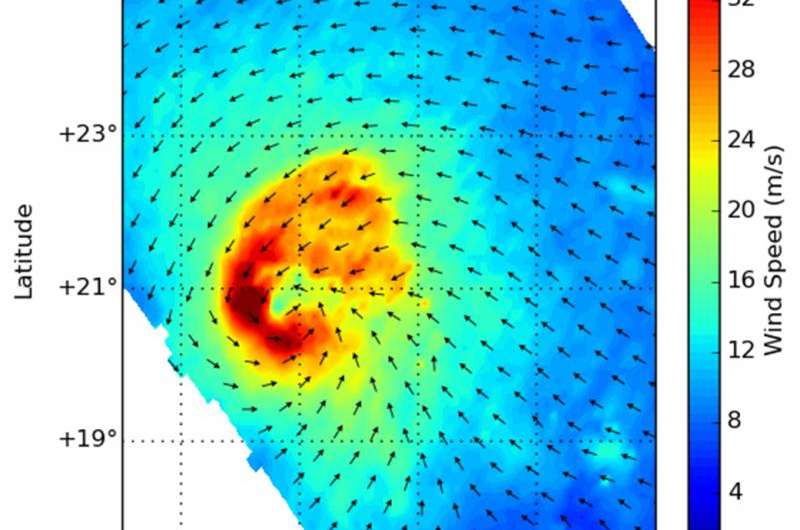NASA sees Tropical Storm Olaf moving back to 'birthplace'

Tropical Storm Olaf is leaving the Central Pacific Ocean and is headed "home" - that is, back to the Eastern Pacific Ocean where it developed 12 days ago. NASA's RapidScat satellite observed the winds in Olaf as it was headed toward the 140 degree latitude line that separates the two ocean basins.
Olaf was born on October 14 in the Eastern Pacific, moved west and crossed into the Central Pacific Ocean on October 20. Now, Olaf is moving to the northeast, and is expected to cross back into the Eastern Pacific Ocean.
RapidScat is an instrument that flies aboard the International Space Station and measures surface winds over open waters of oceans. RapidScat gathered wind speed and direction data on Tropical Storm Olaf on Oct. 25 at 12 a.m. EDT. Strongest sustained winds were from the north to the west and south of the center near 36 meters per second/70 knots/80.5 mph/129.6 kph).
At 11 a.m. EDT (5 a.m. HST/1500 UTC) the center of Tropical Storm Olaf was located near latitude 24.6 north...longitude 141.5 west. That's about 1,065 miles (1,715 km) east-northeast of Honolulu, Hawaii and about 935 miles (1,500 km) east-northeast of Hilo. Despite being that far from Hawaii, the storm is still causing dangerous surf. Large and life-threatening surf will occur on east-facing shores of the Big Island on Monday, October 26, 2015.
Maximum sustained winds had decreased to near 60 mph (95 kph) and additional weakening is expected during the next couple of days. The estimated minimum central pressure is millibars.
Olaf was moving toward the northeast near 10 mph (17 kph) and the Central Pacific Hurricane Center expects that general motion to continue through Tuesday, October 27.
The tropical storm is expected to move east of 140W later on October 26 at which time the National Hurricane Center will resume the issuance of warnings. For updated forecasts, visit: http://www.nhc.noaa.gov
Olaf has spent the last six days in the Central Pacific Ocean and is now returning to its birthplace.
Provided by NASA's Goddard Space Flight Center





















